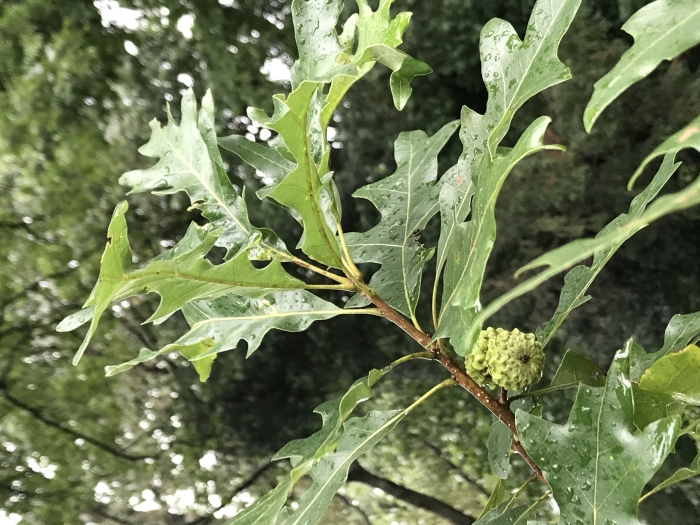Overcup Oak
(Quercus lyrata)
Overcup Oak (Quercus lyrata)
/
/

KATHERINE WAGNER-REISS
CC BY-SA 4.0
Image By:
KATHERINE WAGNER-REISS
Recorded By:
Copyright:
CC BY-SA 4.0
Copyright Notice:
Photo by: KATHERINE WAGNER-REISS | License Type: CC BY-SA 4.0 | License URL: https://creativecommons.org/licenses/by-sa/4.0 | Uploader: KATHERINE WAGNER-REISS | Publisher: Wikimedia Commons | Title: Quercus_lyrata—leaves_and_acorns_at_the_Morris_Arboretum.jpg | Notes: User created page with UploadWizard |





























































Estimated Native Range
Summary
Quercus lyrata, commonly known as Overcup Oak, is a deciduous tree native to bottomland forests, swamps, and floodplains in the Southeastern USA. It is a medium to large-sized tree, typically growing to an average height of 24 meters (79 feet), with exceptional specimens reaching up to 47 meters (154 feet). The trunk diameter averages 80 centimeters (31 inches), and the tree matures in 25 to 30 years. Overcup Oak has a distinctive bark that is light to dark gray with deeply ridged and furrowed bark plates.
The Overcup Oak is noted for its tolerance to wet conditions, often found in areas with poor drainage and seasonal flooding. It is valued for its ability to withstand continuous flooding for two or more growing seasons. The tree’s leaves are dark green and shiny on the top, with a paler gray-green underside covered in fine hairs. In autumn, the foliage turns a mix of red, yellow, and brown, adding seasonal interest. The acorns, nearly enclosed by the cup, are a unique feature. Overcup Oak is used for reforestation in wet areas and as a shade tree in large spaces due to its broad canopy. It prefers clay or silty clay soils and does best in full sun to part shade with medium water requirements. The tree is suitable for urban planting due to its flood tolerance and is also used for wildlife habitat restoration.CC BY-SA 4.0
The Overcup Oak is noted for its tolerance to wet conditions, often found in areas with poor drainage and seasonal flooding. It is valued for its ability to withstand continuous flooding for two or more growing seasons. The tree’s leaves are dark green and shiny on the top, with a paler gray-green underside covered in fine hairs. In autumn, the foliage turns a mix of red, yellow, and brown, adding seasonal interest. The acorns, nearly enclosed by the cup, are a unique feature. Overcup Oak is used for reforestation in wet areas and as a shade tree in large spaces due to its broad canopy. It prefers clay or silty clay soils and does best in full sun to part shade with medium water requirements. The tree is suitable for urban planting due to its flood tolerance and is also used for wildlife habitat restoration.CC BY-SA 4.0
Plant Description
- Plant Type: Tree
- Height: 45-70 feet
- Width: 35-50 feet
- Growth Rate: Moderate
- Flower Color: N/A
- Flowering Season: Spring
- Leaf Retention: Deciduous
Growth Requirements
- Sun: Full Sun, Part Shade
- Water: Medium
- Drainage: Wet, Slow, Medium, Fast
Common Uses
Bee Garden, Bird Garden, Butterfly Garden, Deer Resistant, Edible*Disclaimer: Easyscape's listed plant edibility is for informational use. Always verify the safety and proper identification of any plant before consumption., Erosion Control, Rabbit Resistant, Street Planting, Water Garden
Natural Habitat
Bottomland forests, swamps, and floodplains in the Southeastern USA
Other Names
Common Names: Swamp Post Oak, Water White Oak, Swamp White Oak, Over-Cup Oak
Scientific Names: , Quercus lyrata, Quercus bicolor var. lyrata, Scolodrys lyrata,
GBIF Accepted Name: Quercus lyrata Walter